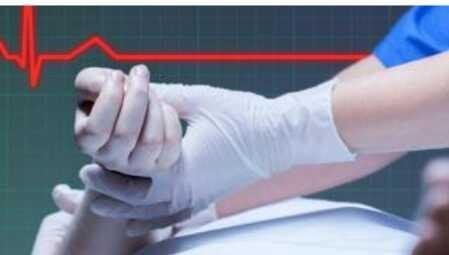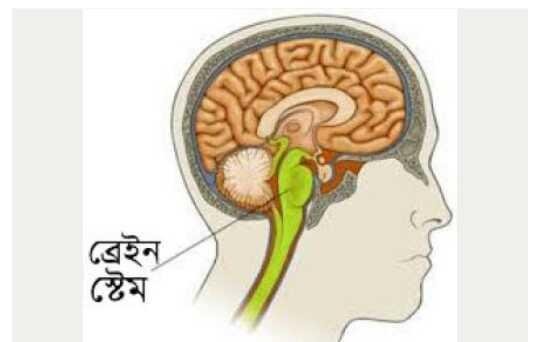What is death, when does it happen ????
Death of a primitive mystery is death. Unbeatable, unreasonable, inevitable He is the ultimate panacea of eternal wonder To someone, 'dying ray, muh sham is equal'. From the beginning of creation people have come to understand, what is death?
The difference between life and death is not as simple as the difference between white and black. Basically there is no single definition of death; Not even a specific moment. Sometimes it is most difficult to answer simple questions. The question is what is death and when does it happen? 
The doctors declared the patient dead due to some diagnostic factors related to heart disease, lungs and brain activity. But when the final or total death (Somatic Death) occurs, it can not answer. In biological terms, there is no specific single moment of death. People die continuously through small deaths during death. Different tissues die at different times.
Sam Pernia, head of the Department of Critical Care and Resuscitation Research, NYU, New York City, in a study in the year 2017, claimed that although theoretically a person was declared dead, he did not run away. His consciousness remains awake for a certain time and he hears others. But he does not have the power or ability to do anything.
Different types of death
The patient's heart is active, the body is warm, the stomach gets rubbing, the intestine can digest food, and any injury to the body is also curable - in such situations the body is fully alive. However, according to the unanimous definition of medicine, the patient is dead. It is called the body of a dead heart (Biting Heart Cadover) or a dead brain (brain dead), whose blood circulation, including body limbs. How are the doctors sure about the fact that they are dead?
It was never easy to guarantee death. In the nineteenth century, 30 theories were used to ensure death. But none of the established medical sciences was universally accepted. In 1846, the Academy of Sciences organized a competition in Paris in France. The competition was organized on the exact definition of death to prevent the burial of someone before the death. StaceyScope was discovered in those days. The young doctor to take part in the competition have also lobbied the stethisakopera two minutes if the doctors do not get a heartbeat, but he is certainly dead. He could be buried safely.

The doctor won the competition with the young guides in the system. Since then, this method of declaration of death has been established. But a discovery of the 1920s found that patients have the chance to survive despite the heartbreak. As a result of this, the theory of dead identification has caused confusion on the basis of heart failure.
After the discovery of the defibrillator after the discovery of the heart, there is confusion about the traditional method of declaring the patient dead.
After the discovery of the defibrillator after the discovery of the heart, there is confusion about the traditional method of declaring the patient dead.
Find out why people die when electrified in the 1920s. Brooklyn's electrical engineer, Kouenhoven, in New York. He thinks that if the person with electrotherapy can return to life after shaking with the right voltage, then he may return to life. After that, William Kounenhoven worked for the next 50 years to implement the concept. Finally he was able to discover the defibrillator. Once heartbeat was stopped once the person was considered dead. But after discovering the defibrillator, it was not the last word.
After the discovery of EEG (electroencephalogram) used in identifying brain activity, the process of death identification becomes more complicated. Prior to 1950, unconscious patients were identified only as comatos (deep sleeping). But at the beginning of the 1950s, doctors around the world found that there was no activity in the brain of many patients considering comatose. To explain this mysterious situation, the first 'coma dipas' term is used in France, that is, the situation that surpasses the coma situation. It is known that 'the heart of the active heart, whose brain is dead but the body is alive. It is a completely new type of patient, which overturns all the five-year treatment-related concepts in one stroke. Born new philosophers, moral and legal complex questions about death.
There is a clear difference between the body of a heartbeat with other unconscious conditions. In both cases the patients remain frozen and do not give any response even if called by the name, but the patient's brain activity continues in sleep and senseless awakening in Koma. There is a possibility of complete recuperation of patients who are in coma. But there is no possibility of survival of the patient if brain dead.

Another situation is that persistent vezetative state (PVS). The situation is more critical than the quasar. The top part of PVS patient's brain is permanently or irreversibly damaged. But this patient is not dead. There are two other names of PVC - Appalic Syndrome and Unresponsive Wakefillance Syndrome. That is to say, some dead are more dead than others.
The bottom of the tube-shaped brain is the brain stem, which regulates vital function of the body including breathing.
The bottom of the tube-shaped brain is the brain stem, which regulates vital function of the body including breathing.
Only 'brain stem' is considered to be the heart of the heartbeat if the whole brain is dead. The bottom of the tube-shaped brain is the brain stem, which regulates vital function of the body including breathing. But with the brain stem, the entire brain dies, but the body of the heart of the heart of the heart of the heart is active. How?
After hundreds of centuries, soldiers, slaughterhouses and hijackers saw the body parts shaking, even after the beheading or bifurcation. In the nineteenth century doctors had found many patients who had been suffering from heart problems after a few hours of breathing. The reason for this is the laser riflex. Automatic reflexes are first heard in 1984. Due to this reflex, the dead person is sitting from the condition of a lot of time, hands up and down again. Although most reflexes occur in the brain's mediocrity, these reflexes are either through the headpieces.
Along with the death of a person in the continuity of life-death, the skin and brain stem cell survive for a few days. The stomach stomach has been found alive after two and a half weeks of death. Even after the last breath, our genes survive for a long time.
Due to the laser riflex, the dead person is often sitting from the sleeping position, putting his hand up and down again.
Due to the laser riflex, the dead person is often sitting from the sleeping position, putting his hand up and down again.
AHM Mahfuj Ullah, Senior Medical Officer of Bangladesh Special Hospital said that if all the cells or tissues are damaged or injured in the body except the brain, then it is regenerated or corrupted. In the process of birth in the human brain, the brain is created and the brain cells or tissues are never regenerated or do not damage the damage. So if the brain's activities stop and there is no chance of survival.
What is death?
James Brenat, a professor of dermatological neurology and medicine, said that if a person's heart failure is not stopped or if breathing is stopped or he or she has been bleeding for few minutes, then he is declared dead. It is the traditional or conventional concept of death. There are other ideas like this. But there is no specific moment of death or there is no specific moment when a person's entire body dies together. There is a series of small deaths in the body before death.
James Brenat said that death has two definitions. The traditional one definition is that the blood circulation of the person who does not have any type of life support and the respiratory failure is permanent.
The other nervous definition is 'brain death'. This means that all the activities and abilities of the brain are unchanging or permanent suspension. In this case, the person's breathing may continue. However, some countries and religions do not accept death of the brain as death. But most of them accept Because, our technology is now sophisticated. However, we can still ask a few more questions, which can complicate the process of declaration of death. You can ask, if a few nerves are active, is it not contrary to this definition of brain death? Before the announcement of the death of a complete brain, what part of the brain needs to be 'dead'? How many parts of the body is effective?
Robert Wechche of Kennedy Institute of Ethics said, "Defining the definition of death is basically a religious or philosophical question."
In the case of biology, the end of life of any organic matter or organism that is life is death. What is life? Researcher, teacher and writer Professor Ahmad Sharif briefly said in his definition of life: "The sum of conscious feelings of awakened times is life." By this definition, permanent destruction of consciousness is death. That is, the death of the brain means death. However, there is also complexity in this case. If the brain dies, the doctors may consider the patient dead, but can not officially declare dead unless heart failure is stopped. Mahfuz Ullah said that no one can be declared dead unless permanent heart rate is stopped. For this, doctors are assured of the ECG if necessary.
James Brenat said that professional doctors never use 'clinically dead' words. Although relatives of some patients used the term to describe 'jayastha' Bernat said, 'It is wrong to say it. However, people who are not related to treatment usually use this term. It is not correct in medical science. '
Wyattstein, a bioethicist at Walsh University in Ohio, said that the use of term 'clinical death' in the case of a person would discourage the reader-audience. If a person is declared dead by using heart-lung and neurological diagnosis, the media should simply say that the person has died. Clinical death says that the person is dead at all, whether you are dead at all.
Weightman said, "It is difficult to declare someone dead." Not because of the lack of technology but the abundance of technology is the reason.
Two centuries ago, doctors used to face problems in determining death. Because, there was no scope for adequate examination. In ancient times they used to test breathing